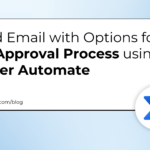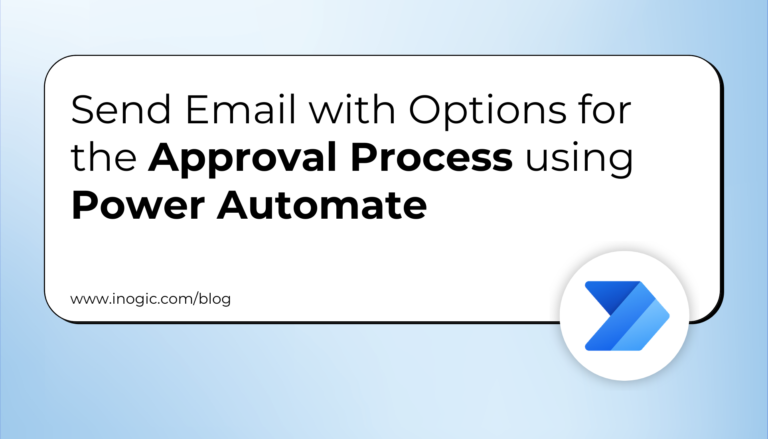Pardot (Marketing Cloud Account Engagement) has been historically standalone from the core Salesforce platform. Over the past few years, however, Pardot has been moving across to the core Salesforce platform, piece by piece.
There’s a belief that Pardot consultants and admins should be familiar with Salesforce administration – and even Salesforce Admin certified. This is something that became apparent to me back in 2017, when I wrote a post “Power-up Pardot Admin” for the (now defunct) Pardot blog. Having chatted with Carl recently, we both agreed that the number of Salesforce skill sets required to be a fully independent Pardot Admin has grown significantly.
First, some background. I started out gaining Salesforce certifications (Certified Admin, Platform App Builder, Service Cloud, etc.) before making the move to specialize in Pardot. I was lucky to have a Salesforce background to tap into Salesforce’s capabilities to extend Pardot and achieve some challenging use cases. Carl’s story is similar; after spending eight years in sales, he decided he wanted “a piece of the consulting pie”, as he described. When working as a Salesforce consultant, he was challenged to take on Pardot. At MarCloud, he’s the guy that can bridge gaps between Salesforce and Pardot, with his skill set, he finds himself doing more Salesforce work.
This guide will highlight the Salesforce skills that we believe will help you get the most out of Pardot, and confidence in understanding your connected Salesforce org. Take this as the ‘cliff notes’ of the Salesforce administration.
Salesforce Marketing Setup
Marketing Setup in Salesforce empowers marketing admins to access:
- Pardot Account Setup: Assign Pardot setup admins for each business unit.
- Users: Users, profiles, permission sets, public groups.
- Object and field configuration: Object manager, Picklist value sets, Schema builder.
- Content Setup: Configure CMS for the Content Experience (Lightning email and landing page builders).
- Sites and Domains: Custom URLs, domains, sites (i.e. create public websites and applications that are directly integrated with your Salesforce org).
- Reporting and Analytics: B2B Marketing Analytics, Engagement History, Object Sync for Pardot,
- Report Types.
- Einstein Pardot.
- Process Automation: Flows, Process Builder, etc.
Throughout the guide, you will notice multiple references to Pardot connector sync errors. Monitoring the Pardot sync queue is vital to avoid a multitude of headaches – and solving errors requires an understanding of Salesforce features, and how they’re configured for your specific org.
1. ‘People’ Objects: Leads vs Contacts vs Person Accounts
The default Salesforce conversion flow goes: Lead → Contact (+ Account). Leads exist as a pre-qualified pool of people. Leads are converted into Contact records, which is irreversible. During conversion, the new Contact can either be related to a new Account, or a matching existing Account. The Lead record becomes unavailable (only visible via reports).
Salesforce Leads and Accounts aren’t friends. Salesforce Contacts are associated with Accounts, whereas Leads are not. Leads exist independently – like floating records.
- Contact record + Account record
- Lead record + Company field
How can you manage incoming leads that should belong to an existing account? That’s where the Matched Lead Component comes in to save the day.
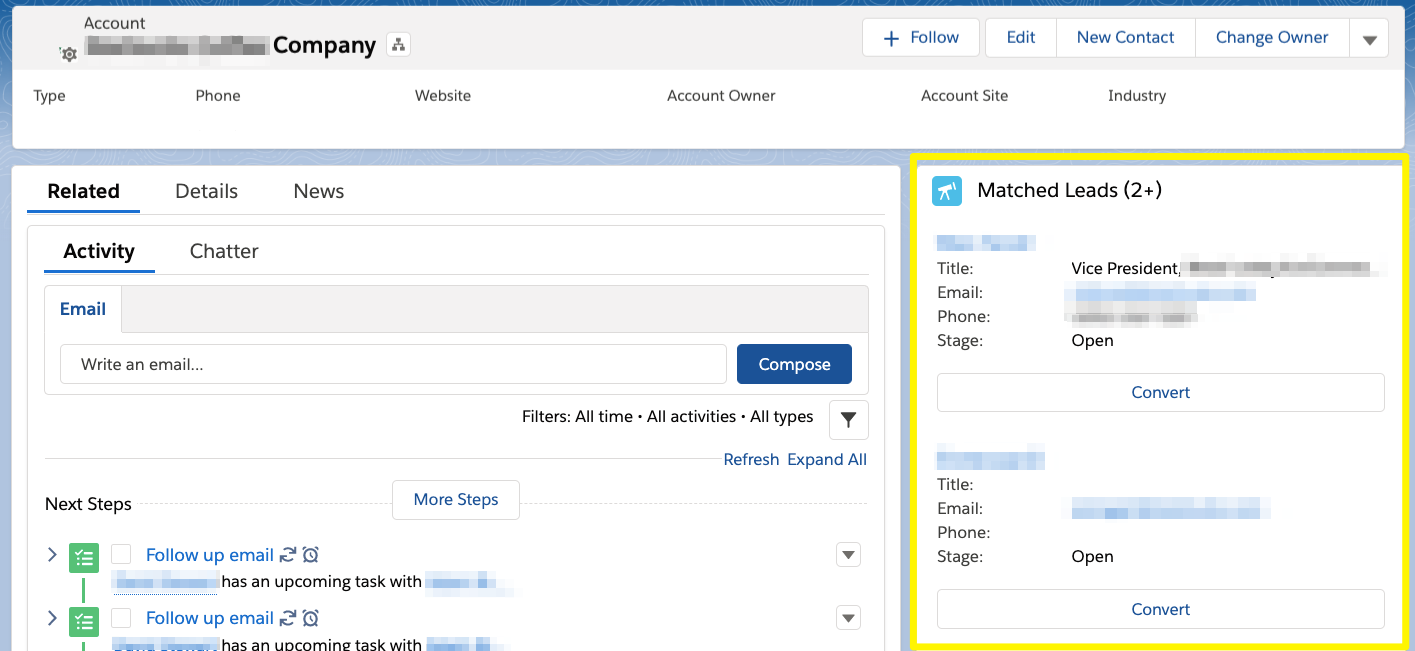
This structure fits nicely to a B2B sales business model – when you are selling to businesses and employees working at Accounts. That left a gap – how do you record individuals? Person Accounts are how consumers are stored in Salesforce, combining some qualities of both Accounts and Contacts – in short, your Person Account records have the characteristics of both Contacts and Accounts.
Person Accounts – things to know:
- Person Accounts are not enabled by default. Check if they are enabled in your org.
- Person Accounts can sync with Pardot prospects.
2. Lead Assignment (Rules and Queues)
When a prospect is ‘sales-ready’, it’s your job, as a marketer, to ensure that these prospects are getting picked up by the assignment workflow. Note that a prospect must be assigned before they can sync to Salesforce via the connector.
There are multiple ways to assign a prospect in Pardot. First, find out if your Salesforce org has an active assignment rule; if that’s the case, you can leverage that to keep aligned with any existing lead assignment processes.
If not, you can use automation rules to assign a prospect to a specific user, a user group, or a Salesforce queue.
There’s other lead assignment methods that could be requested from your Salesforce users. Take Round Robin, for example, where all leads should be split equally amongst our sales reps, one after the other. The cycle repeats when everyone has received an equal share of leads.
3. Marketing Data Sharing Rules
Marketing Data Sharing Rules are what determine which records should sync to Pardot from Salesforce. Use these rules to restrict which data is sent to Pardot, perfect for organizations who want only a subset of their Salesforce Leads or Contacts to exist in Pardot, or who want to route records to specific Pardot Business Units.
So, how is your Salesforce data designed? What field criteria can you use, reliably, to selectively sync Leads/Contacts/Person Accounts to Pardot, without any records slipping through the net, or get abandoned from the connector sync?
4. User Permissions: Profiles and Permission Sets
Profiles, roles and permission sets work together to determine what Salesforce users can see and do inside Salesforce.
I remember ‘security and access’ was one of the toughest topics on the Salesforce Admin certification exam. There is no way around these concepts, as they are foundational to how Salesforce records are visible and editable – which applies to Pardot in multiple ways, too.
Salesforce Profiles
Profiles are “bigger” groups of users than permission sets (which we’ll cover next). Every Salesforce user must have one profile (and only one), typically grouped by business function e.g. Agent User.
You need to understand how profiles work when Pardot user sync is enabled. This maps user profiles (Salesforce) to Pardot user roles. For example, if the Agent User profile is mapped to the “Sales” user role, all Agent Users will be automatically added to Pardot with the ‘Sales” user role.
You need to be aware of which Salesforce profiles your Pardot users have, and which Salesforce profiles are syncing with Pardot user roles. To view syncing profiles for your org, go to your Salesforce Connector settings in Pardot.
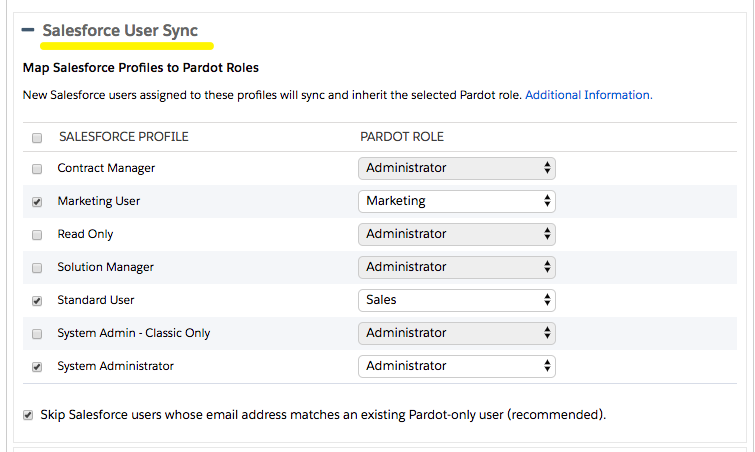
Permission Sets
Profiles are “bigger” groups of users than permission sets, so you will “scoop” up more users by selecting profiles first. However, permission sets will give you more flexibility (i.e. not every user in a particular profile should have access, so permission sets are the best option).
Permission sets are optional. Users can be assigned any number of permissions, or none at all (i.e. user access is only determined by their profile).
Examples of permission sets you’ll come across when working with Pardot are:
- Use Pardot Content Experience: Grants access to the Lightning email builder and Salesforce CMS.
- CRM User or Sales Cloud User AND b2bma_canvas: Grants access to the Pardot Lightning app.
5. Lightning Experience: Navigation and Pages
The Pardot Lightning app uses the same component-based framework as Salesforce Lightning. Therefore, you should be familiar with what you can edit using the Edit Page section, and what’s changed on the page layout.
You may wish to add/remove tabs from the Pardot Lightning app, which is very easy to do. Add components to pages, for example:

6. Salesforce Campaign Data Model
CRMs are a collection of objects that contain records. Those records can be related to records of other objects in certain ways, according to the relationships your organization has decided on (i.e. the data model).
Out of the box, before any configuration is done, the Campaign object has the following related objects:
- Campaign Members
- Landing Pages
- Marketing Forms
- Marketing Links
- Snippets
- List Emails
In other words, a Campaign may (or may not) have related campaign members, forms or landing pages.
If you’re in doubt as to which objects are related to your Salesforce campaigns (and you’re visual/system-minded), you should look at your specific Salesforce data schema (available from Marketing Setup) which maps out how each object is related to others.
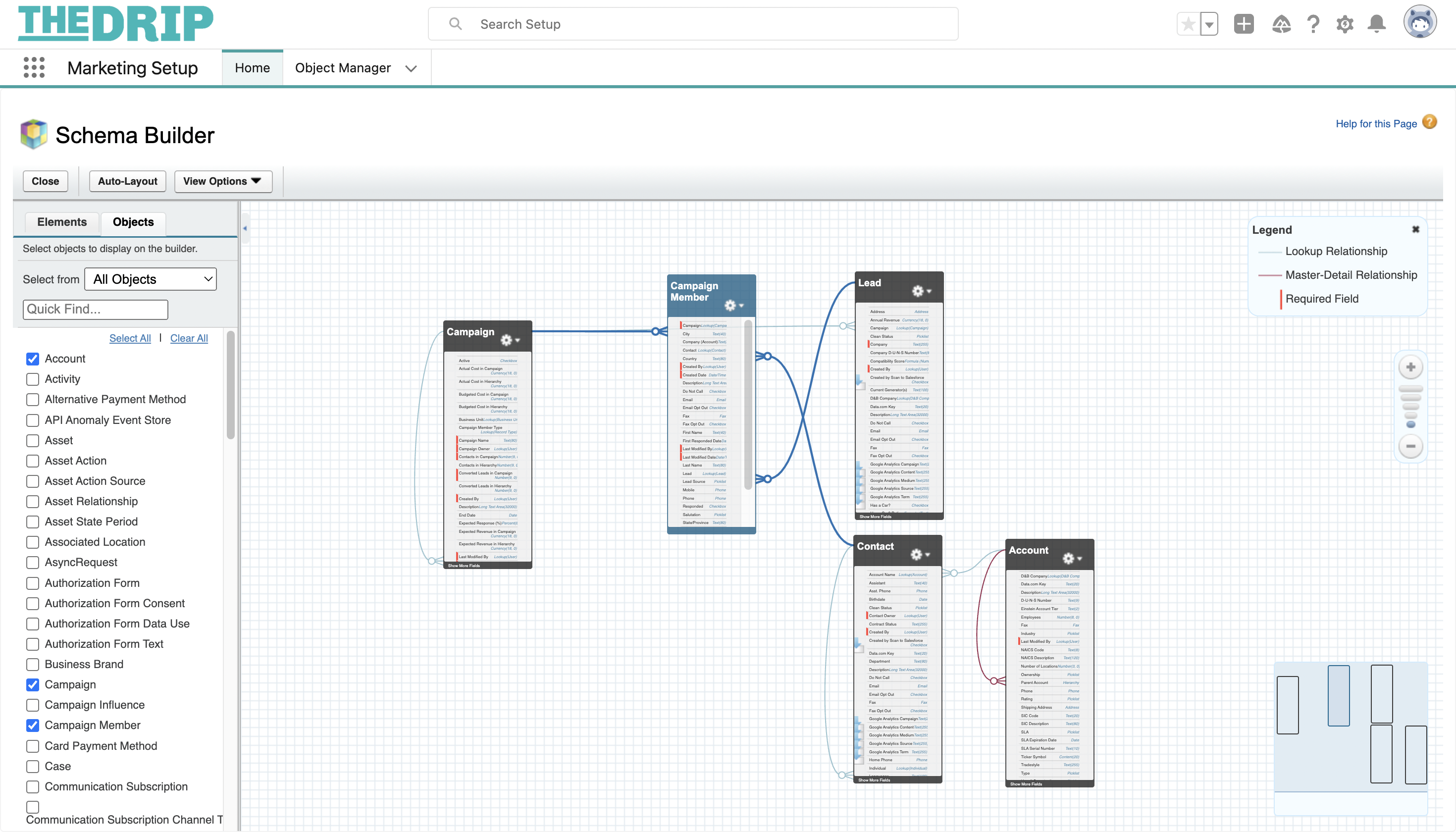
You can view the standard Salesforce data schema, a page I keep bookmarked and refer to often!

When looking at data models, be aware that your org may be configured differently, with custom objects in the mix; however, I don’t see any need to disrupt the standard data model surrounding Salesforce Campaigns.
7. Contact Roles
Opportunity contact roles provide a direct link between contacts and opportunities that doesn’t exist in the Salesforce data model. Opportunity roles include “Decision Maker”, “Evaluator”, and many others that come with Salesforce, out-of-the-box.
Some of us love to hate contact roles – but they are a necessary object that Salesforce Admins and marketers would be lost without, especially when it comes to Campaign Influence reporting and Pardot/Account Engagement segmentation.
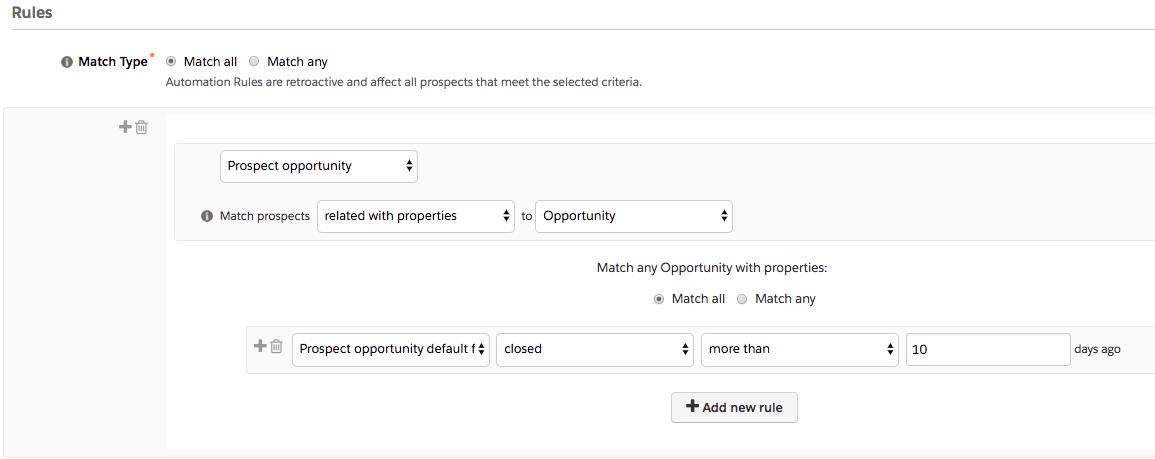
8. Campaign Influence
Salesforce Campaign Influence is how Salesforce Opportunities are associated with the Campaigns that helped generate them. It’s all about joining the dots between sales revenue (stored in opportunities) and marketing data (stored in campaigns) – and therefore, is the fundamental connection in measuring Marketing ROI (return on investment).
While it looks simple ‘on paper’, in reality it’s more art than science. You need to understand your Lead and Opportunity lifecycles in order to make a sensible decision on what can count as marketing “influence” or whether that ship has sailed.
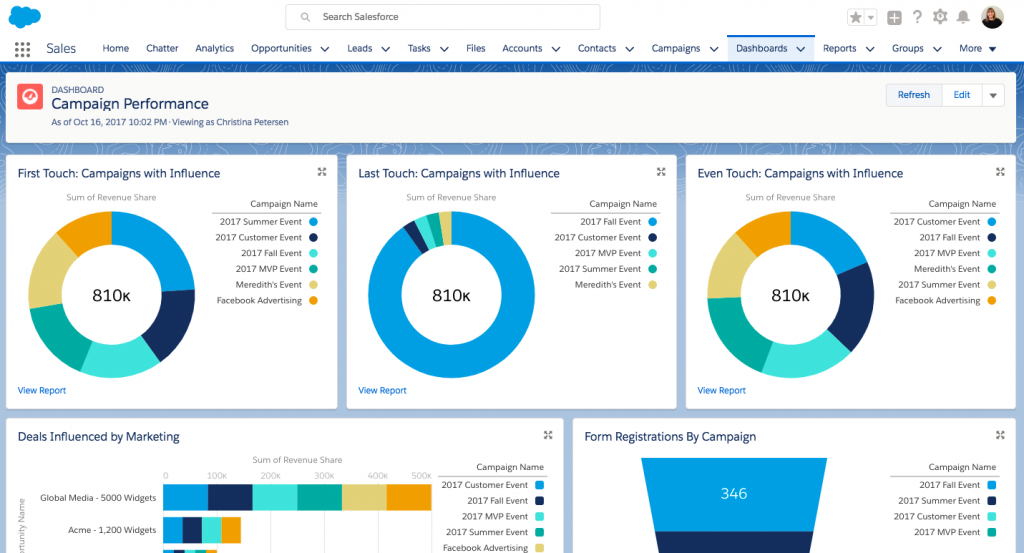
Image source: Pardot
9. Record Types
Salesforce record types are a way of grouping many records for one type for that object. Record types in Salesforce can be applied to any standard or custom object, and allow you to have a different page layout, fields, required fields, and picklist values.
Record types come into marketing’s remit when it comes to connected campaigns. During set up, you’re asked to select the Campaign record types to sync Salesforce Campaigns to Pardot.

So, ask yourself: Why do we have campaign record types, is there anything distinctive between them? Which campaigns don’t we want syncing with Pardot?
10. Reporting (+ Report Types)
Salesforce is praised for its reporting capabilities, which are intuitive to use once you know about objects and relationships. When it comes to the Campaign object, the following reports are available out of the box.

Custom report types enable you to create reports that go beyond the standard Salesforce report types. You can think of a Salesforce report type as a template/framework that tells Salesforce which objects and relationships to consider, and therefore which fields to make available in the report builder – like a magnifying glass on your whole Salesforce data model.
As a Pardot customer, you have more marketing objects to play with – and therefore, more possibilities with report types. Engagement History reporting gives us the opportunity to build flexible, Salesforce reports based on Pardot marketing asset performance data.
You will need to create Engagement History custom report types first; I created a couple of tutorials on how to do this, and the results you can expect.
Once a Lead is converted, data is transferred to the Contact record (providing the fields are mapped). That Contact record goes on to potentially do great things – a high value Opportunity, a champion in an Account. The Leads with converted lead information report shows all the data related to a lead after it had been converted – you’ll be wowed by how much can be shown in one report, pulling in multiple different objects in one view.
11. Salesforce Flow
Salesforce Flow empowers you to build complex business solutions using clicks, not code. Flow Builder is the most powerful tool that a Salesforce Admin has at their disposal, giving you similar powers that Salesforce developers have.
Pardot Admins are exploring Flow now, more than ever before. Flow can support by creating Campaign Member status automatically depending on the type of Campaign, or by passing values from prospects to Campaign Members, storing data related to that prospect’s engagement in the specific Campaign, for example, UTM values:
Think about all the campaigns you could run with help from Flow. Birthday campaigns are one example:
If your lead lifecycle doesn’t fit the mold that’s typical of Pardot customers, then use can use Flow to refashion how Leads are treated when they reach Salesforce:

External Actions
Take actions on prospects outside of Pardot (Account Engagement). For example, from Engagement Studio, you can register prospects for a webinar or events, send an SMS or survey, and other third-party platforms.
External Actions rely on invocable actions, which allow developers to package useful code functionality into declarative building blocks that can be used in other Salesforce tools, including Flow. Through code, set the parameters for input (to Flow or Engagement Studio) which then use these values for the output, such as your webinar platform.
12. Salesforce CMS
Salesforce CMS is the content management system Salesforce products leverage for storing and accessing documents, images, videos, knowledge articles, and more, as a central repository for your org.
The Lightning email builder and landing page builder for Pardot requires that images are stored in Salesforce CMS (to be fetched when building emails/landing pages).
Salesforce CMS isn’t the easiest to wrap one’s head around – we suggest you understand how it works (as this is the future!)
13. Validation Rules
Validation Rules in Salesforce verify that the data entered by a user meets certain criteria before the user can save the record.
On the Pardot side, there’s no equivalent way to set validation that’s as specific as Salesforce validation rules.
Salesforce validation rules are key for Pardot Admins to be aware of because Pardot connector sync errors can occur as a result of “Custom Validation Exception” – in other words, the Pardot record data attempting to sync to Salesforce does not pass validation rules requirements.
14. Duplicate Rules
Duplicate rules in Salesforce prevent duplicate records from being created (or alerting users that a duplicate has been created).
On the Pardot side, there’s no equivalent way to set duplicate rules that are as specific as Salesforce duplicate and matching rules.
Salesforce duplicate rules are key for Pardot Admins to be aware of because Pardot connector sync errors can occur as a result of “Deduplication matching rule conflict” – in other words, Pardot is attempting to create a Lead/Contact that’s considered a duplicate record in Salesforce.
15. Lookup vs Rollup Summary Relationships
There are relationships in Salesforce described as “parent” and “child” because the “parent” record can have one or more “child” records. Parent/child relationships in Salesforce can be either lookups or master-detail (a lookup relationship is loosely coupled, vs master-detail which is a strongly coupled relationship, so if the parent is deleted the child records are, too).
Be aware of how the objects you work with behave with one another (e.g. Contacts have a lookup relationship to Accounts).
Furthermore, understand if the lookup relationship fields you work with have filters. For example, a Salesforce admin can set filters for which parent records the child record is allowed to be related to. For example, a sales user who tries to relate a ‘partner’ Contact to a ‘Customer’ Account will be blocked, with an error message appearing.
This concept is key for Pardot Admins because Pardot connector sync errors can occur as a result of “FIELD_FILTER_VALIDATION_EXCEPTION”.
16. Picklist (+ Value Sets)
Picklist fields in Salesforce allow users to select one value from a drop down list of options.
On the Pardot side, you can have dropdown fields. These can be mapped to Salesforce picklist fields. However, the dropdown field values need to be kept in alignment with Salesforce picklist values:
- Field Settings: Check the setting Use pre-defined values (for checkboxes, radio buttons, drop downs, and multi-selects)

- Load Default Data on Pardot forms: You will need to use this button that appears beside any prospect dropdown field (found on step 2 of the form wizard). This ensures that the correct predefined options for drop downs are loaded.

Salesforce picklist fields are key for Pardot Admins to be aware of because Pardot connector sync errors can occur as a result of “Invalid picklist value: bad value for restricted picklist field” – in other words, Pardot attempted to sync a prospect field to a Lead/Contact picklist field where the value does not exist as a picklist option, therefore, not syncing successfully.
Summary
There’s a belief that Pardot consultants and admins should be familiar with Salesforce administration. Pardot (Marketing Cloud Account Engagement) has been historically standalone from the core Salesforce platform. Over the past few years, however, Pardot has been moving across to the core Salesforce platform, piece by piece.
This guide has highlighted the Salesforce skills that we believe will help you get the most out of Pardot, and confidence in understanding your connected Salesforce org. Take this as the ‘cliff notes’ of the Salesforce administration.



